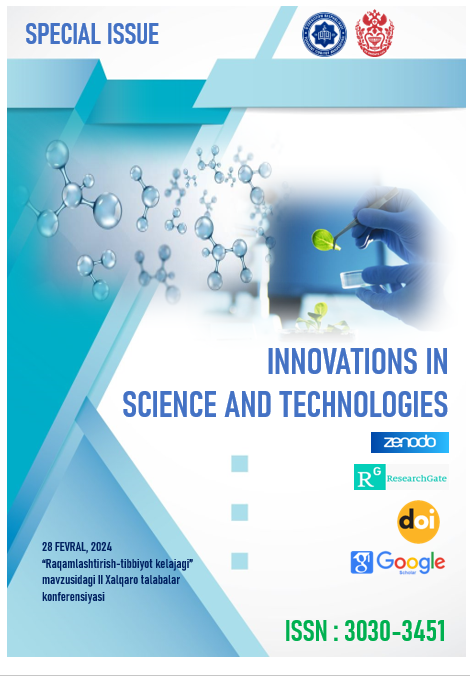THE EFFECTIVE IMPACT OF DIGITIZATION IN THE PRODUCTIVITY INDUSTRY ON MEDICAL WORKERS IN THE IMPLEMENTATION OF HEALTH INSURANCE
Keywords:
Digitization, healthcare, medical workers, productivity, health insurance, information technology, workflow, efficiency, accuracy, challenges, recommendations.Abstract
The healthcare sector is rapidly digitizing, which has a big impact on how health insurance is implemented and how medical professionals practice. The useful effect of this digitization on medical staff productivity in managing health insurance systems is investigated in this research. This thesis examines both the advantages and disadvantages, highlighting particular technologies and
adjustments to workflow that improve accuracy and efficiency while also examining potential difficulties and dangers. The objective of the study is to offer valuable insights and suggestions for enhancing digital resources and promoting efficient cooperation between healthcare providers and the health insurance scheme.
Downloads
References
Adler-Milstein J, Kvedar J, Bates DW. Telehealth among US hospitals: several factors, including state reimbursement and licensure policies, influence adoption. Health Affairs. 2014 Oct 1;33(2):207-15.
Agarwal R, Gao G, DesRoches C, Jha AK. Research commentary—The digital transformation of healthcare: current status and the road ahead. Information Systems Research. 2010 Jun 1;21(4):796-809.
Alami H, Gagnon MP, Wootton R, Fortin JP, Zanaboni P. Exploring factors associated with the uneven utilization of telemedicine in Norway: a mixed methods study. BMC Medical Informatics and Decision Making. 2017 Dec;17(1):180.
Chen RF, Lee CY. Social capital and knowledge sharing: Effects on patient safety. Journal of Advanced Nursing. 2016 Dec;72(12):3107-18.
Chismar WG, Wiley-Patton S. Does telemedicine reduce ED crowding? Berkeley Business and Economic Law Journal. 2016;11:427.
Gagnon MP, Ngangue P, Payne-Gagnon J, Desmartis M. m‐Health adoption by healthcare professionals: a systematic review. Journal of the American Medical Informatics Association. 2016 Jan 1;23(1):212-20.
Gagnon MP, Orruño E, Asua J, Abdeljelil AB, Emparanza J. Using a modified technology acceptance model to evaluate healthcare professionals' adoption of a new telemonitoring system. Telemedicine and e-Health. 2012 Jun 1;18(5):421-7.
Greenhalgh T, Robert G, Macfarlane F, Bate P, Kyriakidou O. Diffusion of innovations in service organizations: systematic review and recommendations. The Milbank Quarterly. 2004 Sep;82(4):581-629.
Kushniruk A, Nøhr C. Participatory design, user involvement and health IT evaluation. Studies in Health Technology and Informatics. 2016;222:139-51.
Mair F, May C, O'Donnell C, Finch T, Sullivan F, Murray E. Factors that promote or inhibit the implementation of e-health systems: an explanatory systematic review. Bulletin of the World Health Organization. 2012 Aug 1;90(5):357-64.
McGonigle D, Mastrian K. Nursing informatics and the foundation of knowledge. Jones & Bartlett Learning; 2018.
Osei-Frimpong K, Asiedu YC, Osei-Frimpong N, Asare G. Beneficiaries perceptions of health insurance as a motivating factor in seeking healthcare among the insured in Ghana. European Scientific Journal, ESJ. 2015 Dec;11(33).
Perera C, Wijesinghe CJ. Digital technologies and outcomes in chronic disease management: A systematic literature review. Studies in Health Technology and Informatics. 2019;260:237-47.
Rangachari P. Knowledge sharing and organizational learning in the context of hospital infection prevention. Quality Management in Healthcare. 2015 Jan 1;24(1):14-28.
Rosenbaum BP, Barbera JP, Gasner MR. The medical reserve corps: an option for enhancing surge capacity in emergencies?. Public Health Reports. 2008;123(2):185-98
Downloads
Published
Issue
Section
License
License Terms of our Journal











